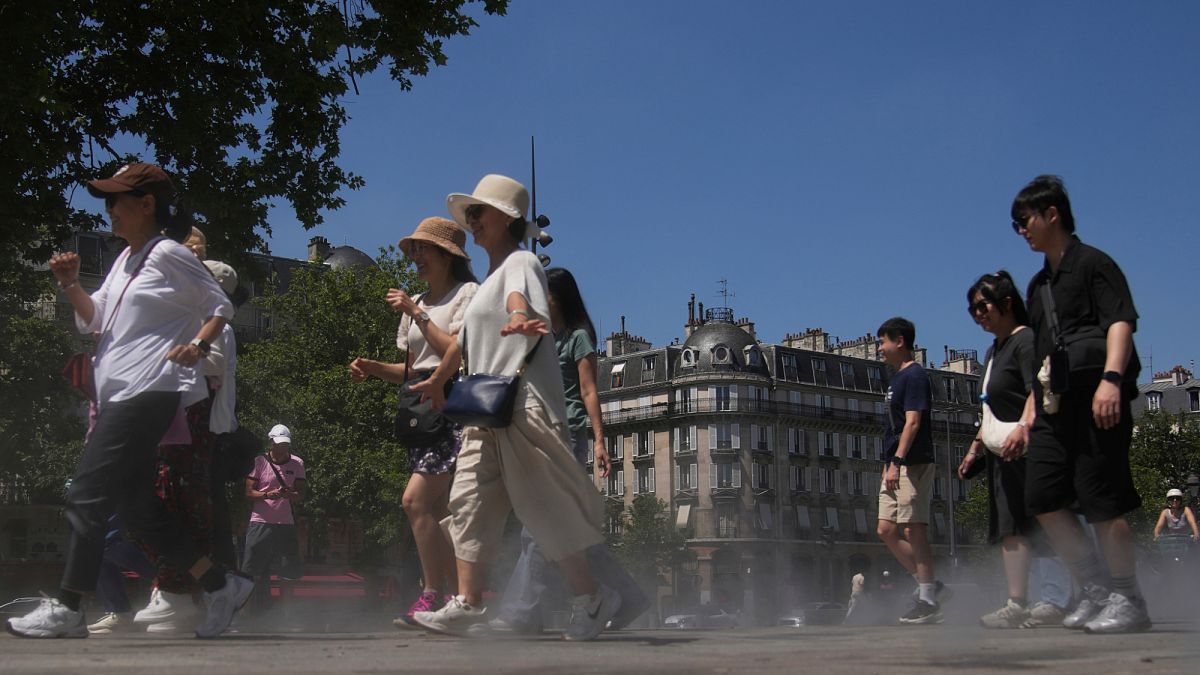

As temperatures soar across the Northern Hemisphere, communities facing extreme heat are demonstrating resilience and adaptability. In Paris, both tourists and locals find comfort in the city’s cooling canals and misting stations amidst an intense heatwave gripping Europe. Meanwhile, other regions of the world are similarly responding to unprecedented temperatures with varying challenges and tactics.
In the heart of Paris, where the City of Light is under a red alert due to extreme heat, residents and visitors are seeking solace along the canal banks and in shaded areas. Misting stations offer a refreshing reprieve from the heat, playing a pivotal role in combatting the soaring temperatures. This proactive response embodies how urban life can adapt to the influences of climate change, ensuring that public spaces remain hospitable even as mercury levels rise.
Elsewhere in Europe, the heatwave has ushered in more severe consequences. In Turkey, the parched landscape has succumbed to the spread of wildfires, necessitating the evacuation of over 50,000 individuals across 41 locations. The fires have inflicted damage on more than 200 homes and several businesses, underscoring the urgent need for robust disaster preparedness initiatives. Efforts to contain the fires are ongoing, highlighting the resilience and dedication of local authorities and emergency responders.
The Himalayas, bucket-brimming with ancient traditions, have not been immune to the impacts of climate change either. Villagers in Samjung, who have long thrived in the mountainous terrains through herding and harvesting, find themselves compelled to relocate. The lack of sufficient snowpack and dependable water sources coupled with erratic rainfall has disrupted their way of life, compelling a move to more sustainable locales. This migration reflects a growing trend observed in vulnerable regions, where community adaptation becomes a necessary strategy for survival.
Globally, the heatwave is not confined to Europe. In Japan, the nation has experienced its hottest June on record, as confirmed by the Japan Meteorological Agency. This development is part of a broader pattern of rising temperatures worldwide, reinforcing the growing impact of climate change. The agency’s records underscore the pressing need for innovative cooling strategies and the adoption of sustainable practices to mitigate the effects of such extreme temperatures.
Amidst these challenges, the overarching narrative remains one of adaptability and perseverance. Communities around the globe are finding diverse ways to cope with and counteract the repercussions of extreme heat, from urban cooling installations to migration and wildfire mitigation. As these communities forge ahead, their experiences offer vital insights into developing resilient responses tailored to the demands of a changing climate.
The unfolding scenarios in Europe, the Himalayas, and Japan, though diverse, share a common focus on the necessity of flexibility and the human capacity to innovate in the face of adversity. While the immediate prospects may seem daunting due to the intensity and frequency of such climate events, the collective efforts across global communities provide a hopeful outlook on human resilience and the path towards sustainable living.
Source: {link}
